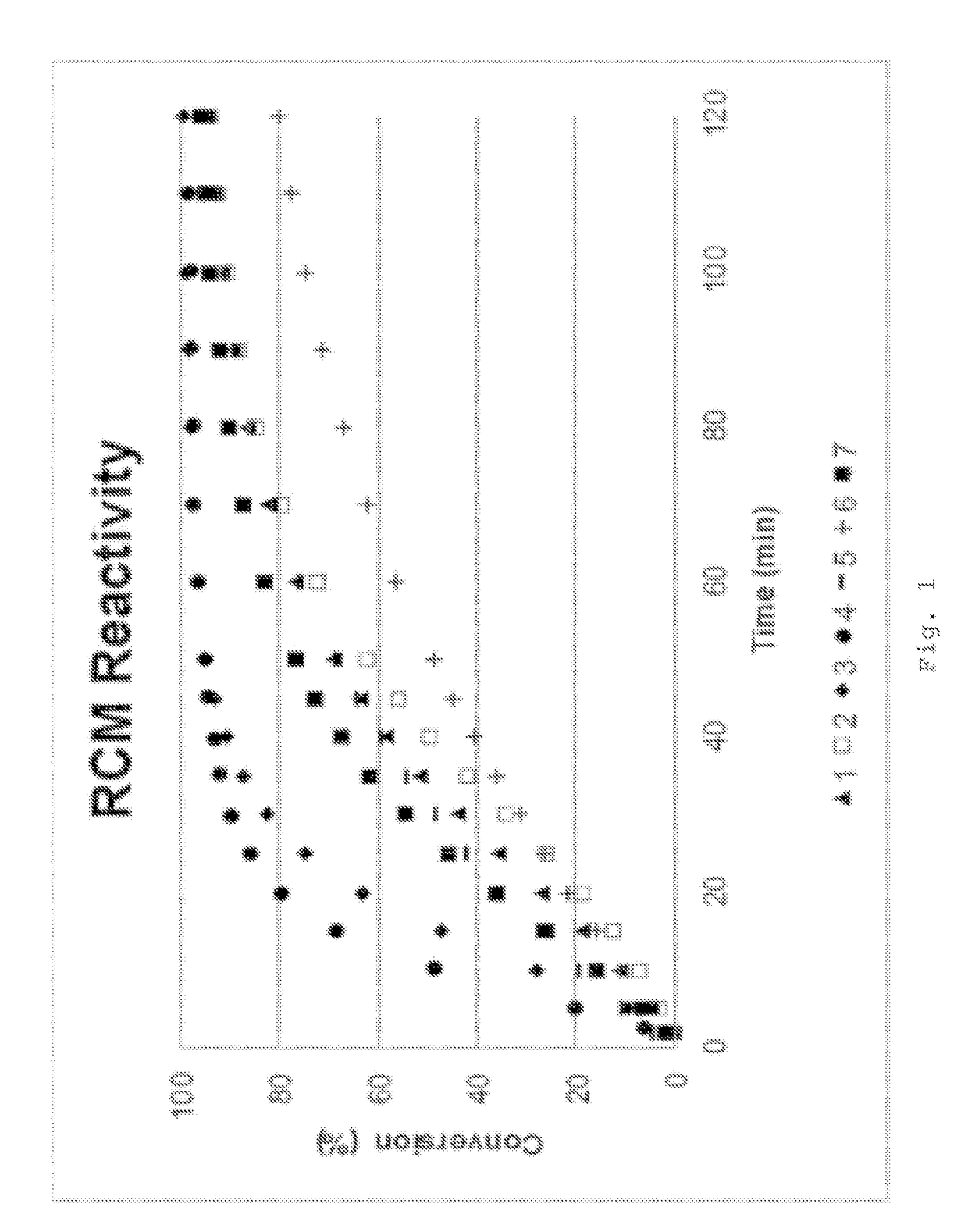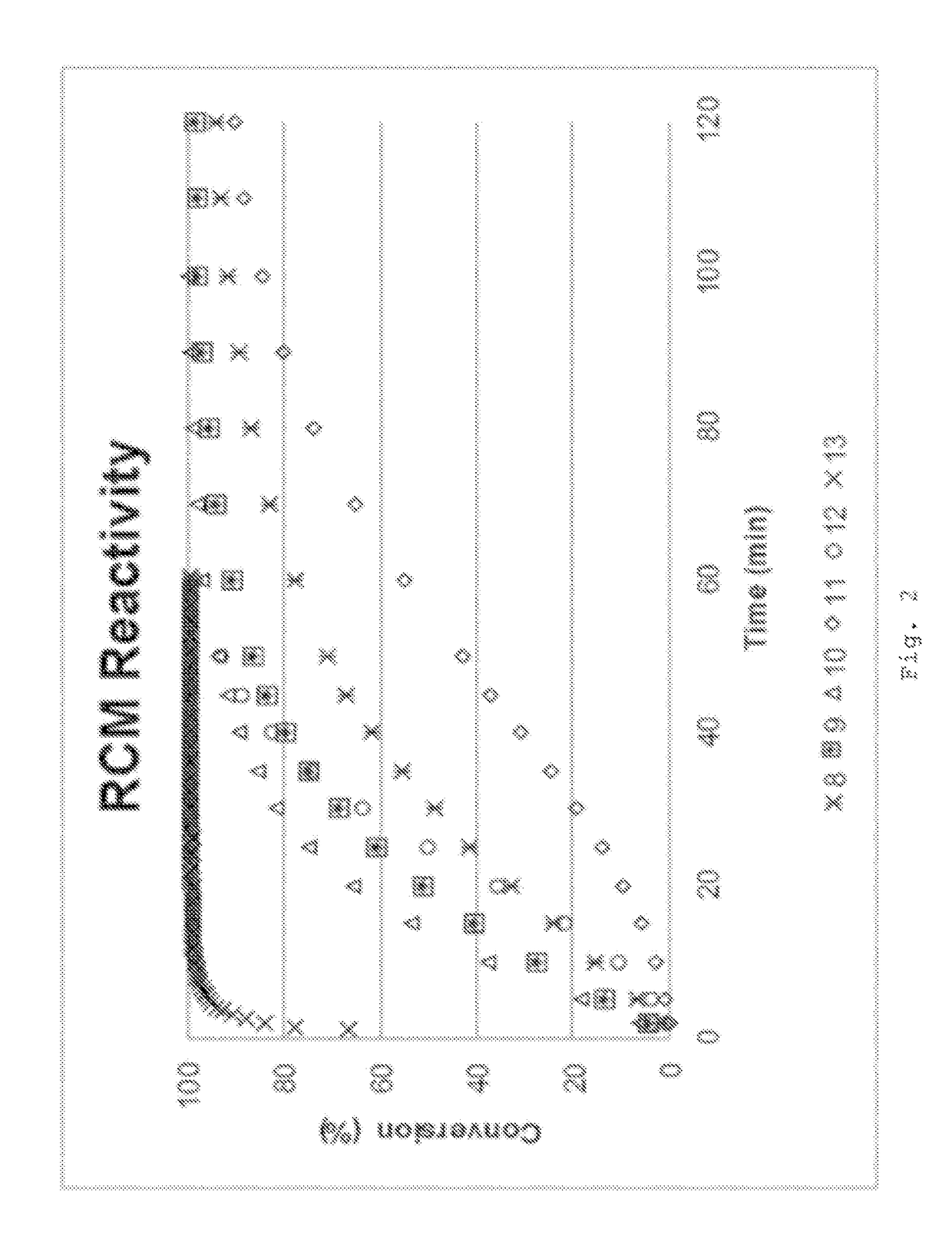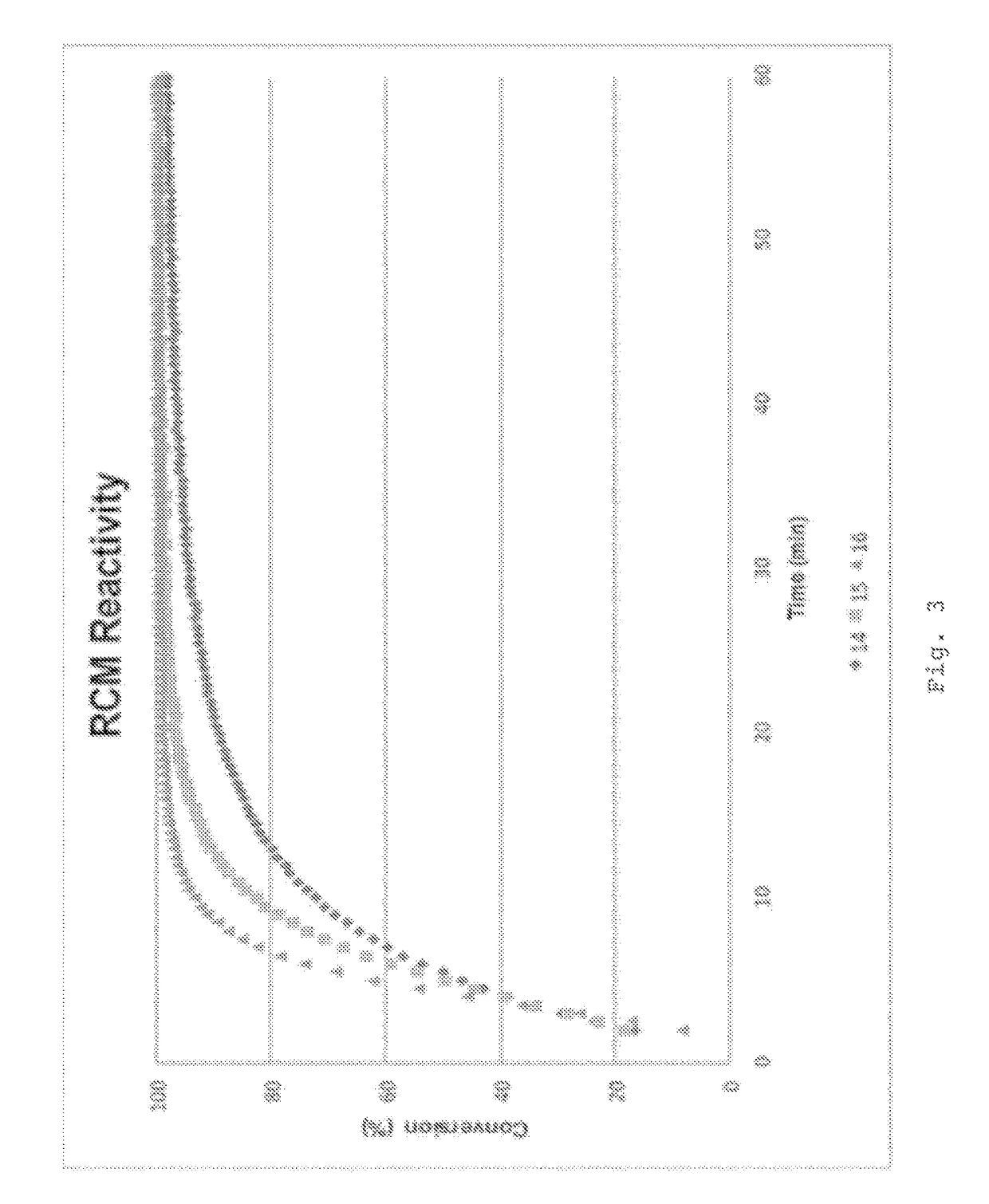Transition metal complex containing sulfonamide or amide group for olefin metathesis reaction and application thereof
a transition metal and complex technology, applied in the field of transition metal complexes, can solve the problems of difficult handling, carbene ligands, wittig reagents, etc., and achieve the effects of convenient access to reactions, advantageously controlled activity, and environmental protection
- Summary
- Abstract
- Description
- Claims
- Application Information
AI Technical Summary
Benefits of technology
Problems solved by technology
Method used
Image
Examples
preparation example 1
[0153]Synthesis of (1,3-bis(2,4,6-trimethylphenyl)-2-imidazolidinylidine)dichloro(N-methylene-N-phenylmethanesulfonamide)ruthenium
[0154]In an oxygen- and moisture-free glove box, (1,3-bis(2,4,6-trimethylphenyl)-2-imidazolidinylidine)dichloro(phenylmethylene) (tricyclohexylphosphine)ruthenium (84.90 mg, 0.1 mmol),
[0155]N-phenyl-N-vinylmethanesulfonamide (39.45 mg, 0.2 mmol), copper (I) chloride (19.80 mg, 0.2 mmol), and dichloromethane (4 ml) were added to a 25 ml Schlenk glass tube.
[0156]After the lid thereof was sealed with a rubber septum, the Schlenk glass tube was withdrawn from the glove box and sealed with Parafilm. Subsequently, the glass tube was agitated at room temperate for 3 hours. After completion of the reaction, the reaction mixture was separated by silica chromatography using a mixture of dichloromethane and methanol as a mobile phase to obtain the product of interest, (1,3-bis(2,4,6-trimethylphenyl)-2-imidazolidinylidine)dichloro(N-methylene-N-phenylmethanesulfonami...
preparation example 2
[0158]Synthesis of
[0159](1,3-Bis(2,4,6-trimethylphenyl)-2-imidazolidinylidine)dichloro(phenylmethylene) (tricyclohexylphosphine)ruthenium (84.90 mg, 0.1 mmol), N-(4-methoxyphenyl)-N-vinylmethanesulfonamide (45.46 mg, 0.2 mmol), copper (I) chloride (19.80 mg, 0.2 mmol), and dichloromethane (4 ml) were reacted in the same condition as in Preparation Example 1 to afford (1,3-bis(2,4,6-trimethylphenyl)-2-imidazolidinylidine)dichloro(N-(4-methoxyphenyl)-N-methylenemethanesulfonamide)ruthenium.
[0160]NMR: 1H NMR (500 MHz, C6D6) δ=13.17 (s, 1H), 6.71 (d, J=9.2 Hz, 2H), 6.44 (d, J=8.6 Hz, 2H), 6.92˜6.39 (m, 4H), 3.39 (s, 4H), 3.20 (s, 3H), 2.83˜2.37 (m, 12H), 2.61 (s, 3H), 2.19˜1.70 (m, 6H) ppm
preparation example 3
[0161]Synthesis of
[0162](1,3-Bis(2,4,6-trimethylphenyl)-2-imidazolidinylidine)dichloro(phenylmethylene) (tricyclohexylphosphine)ruthenium (84.90 mg, 0.1 mmol), N-(3,5-bis(trifluoromethyl)phenyl)-N-vinylmethanesulfonamide (66.65 mg, 0.2 mmol), copper (I) chloride (19.80 mg, 0.2 mmol), and dichloromethane (4 ml) were reacted in the same condition as in Preparation Example 1 to afford (1,3-bis(2,4,6-trimethylphenyl)-2-imidazolidinylidine)dichloro(N-(3,5-bis(trifluoromethyl)phenyl)-N-methylenemethanesulfonamide)ruthenium. Yield: 70%
[0163]NMR: 1H NMR (500 MHz, C6D6) δ=13.27 (s, 1H), 7.67 (s, 1H), 7.33 (s, 2H), 6.72 (brs, 4H), 3.42 (s, 4H), 2.50 (bs, 12H), 2.4 (s, 3H), 1.85 (bs, 6H) ppm
PUM
| Property | Measurement | Unit |
|---|---|---|
| Chemical | aaaaa | aaaaa |
| reactivity | aaaaa | aaaaa |
| catalytic efficiency | aaaaa | aaaaa |
Abstract
Description
Claims
Application Information
 Login to View More
Login to View More - R&D
- Intellectual Property
- Life Sciences
- Materials
- Tech Scout
- Unparalleled Data Quality
- Higher Quality Content
- 60% Fewer Hallucinations
Browse by: Latest US Patents, China's latest patents, Technical Efficacy Thesaurus, Application Domain, Technology Topic, Popular Technical Reports.
© 2025 PatSnap. All rights reserved.Legal|Privacy policy|Modern Slavery Act Transparency Statement|Sitemap|About US| Contact US: help@patsnap.com



